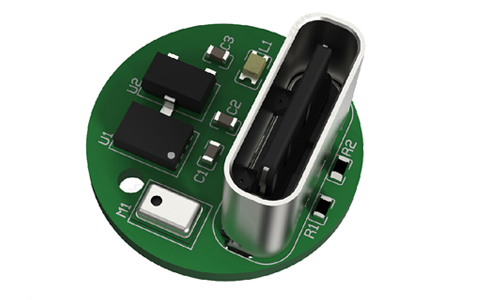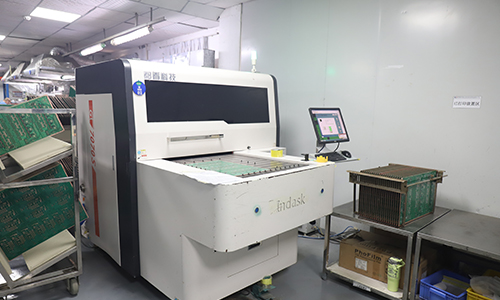
2-layer e-cigarette PCB is a printed circuit board designed for e-cigarette devices, usually used to connect batteries, heating elements, sensors and control circuits.
Vape PCB Product Introduction

1.Product Overview
2-layer e-cigarette PCB is a printed circuit board designed for e-cigarette devices, usually used to connect batteries, heating elements, sensors and control circuits. This PCB adopts a double-layer design, which can effectively support the functional requirements of e-cigarettes and ensure good electrical performance and reliability.
2.Product Features
1. Double-layer design
Space utilization: The double-layer structure makes the circuit layout more compact and suitable for small e-cigarette devices.
Simplified wiring: Effectively reduces the complexity of wiring, facilitating manufacturing and assembly.
2. Excellent electrical performance
Stability: Provides stable current and voltage to ensure the normal operation of e-cigarettes.
Low signal loss: Good conductivity to ensure the stability of signal transmission.
3. High temperature resistance
High temperature tolerance: Able to withstand the high temperature generated by the heating element to ensure the long-term use of the PCB.
Safety: The design takes safety into consideration to prevent overheating and short circuit.
4. Surface treatment
Anti-oxidation treatment: Surface treatment can prevent oxidation and extend the service life of the PCB.
Good weldability: Ensure the welding quality of components and improve the reliability of products.
3.Technical Specifications
| Number of layers | 2 | Minimum line width and line spacing | 0.4/0.4mm |
| Board thickness | 1.6mm | Minimum aperture | 0.3 |
| Board material | KB-6160 | Surface treatment | lead-free tin spraying |
| Copper thickness | 1/1oz | lead-free tin-spraying |
4.Application Areas
Electronic cigarette equipment: used for various types of electronic cigarettes, including rechargeable and disposable electronic cigarettes.
Heating element control: control the working state of the heating element to ensure the atomization effect.
Battery management: monitor the battery power to ensure safe use.
 |
 |
5.Production Process
1.Design: Use professional software for circuit design and layout.
2.Plate making: Make photolithography according to the design file.
3.Etching: Remove excess copper layer and form circuit pattern.
4.Drilling: Drill holes according to design requirements to connect circuits between different layers.
5.Surface treatment: Anti-oxidation treatment to improve welding performance.
6.Testing: Conduct electrical testing to ensure product quality.
6.Summary
2-layer electronic cigarette PCB is an indispensable component of electronic cigarette equipment. With its excellent electrical performance and compact design, it is widely used in various electronic cigarette products. Whether it is heating control or battery management, 2-layer electronic cigarette PCB can meet the needs of modern electronic cigarettes and ensure that users get a good experience.
FAQ
Q: Do You have an office in shanghai or shenzhen that i can visit?
A: We are in Shenzhen.
Q: Will you attend the fair to show your products?
A: We're planning on it
Q: How long does it take you to provide the designing options for us?
A: 3 days
Q: Is there a problem of slag in the circuit board hole?
A: It may be caused by too many stacked boards, poor dust collection effect, fiber winding drill bit, improper drilling process parameters or too small spiral angle of the drill bit. Solutions include changing the drill bit or adjusting the parameters, improving the dust collection device, etc.
Q: Problems with different hole shapes on the circuit board?
A: It may be caused by fiber winding around the drill bit, the spiral angle of the drill bit is too small, too many stacked plates, or improper drilling process parameters. Solutions include replacing the spindle bearings, improving the conversion and feed speed, re-grinding or replacing the drill bit, etc.1.
Q: The drill bit is easy to break?
A: It may be caused by improper operation of the drilling machine, problems with the drill bit, or too thick stacked plates. Solutions include checking the pressure of the pressure foot, adjusting the various relationships between the pressure foot and the drill bit, and checking the spindle, etc.